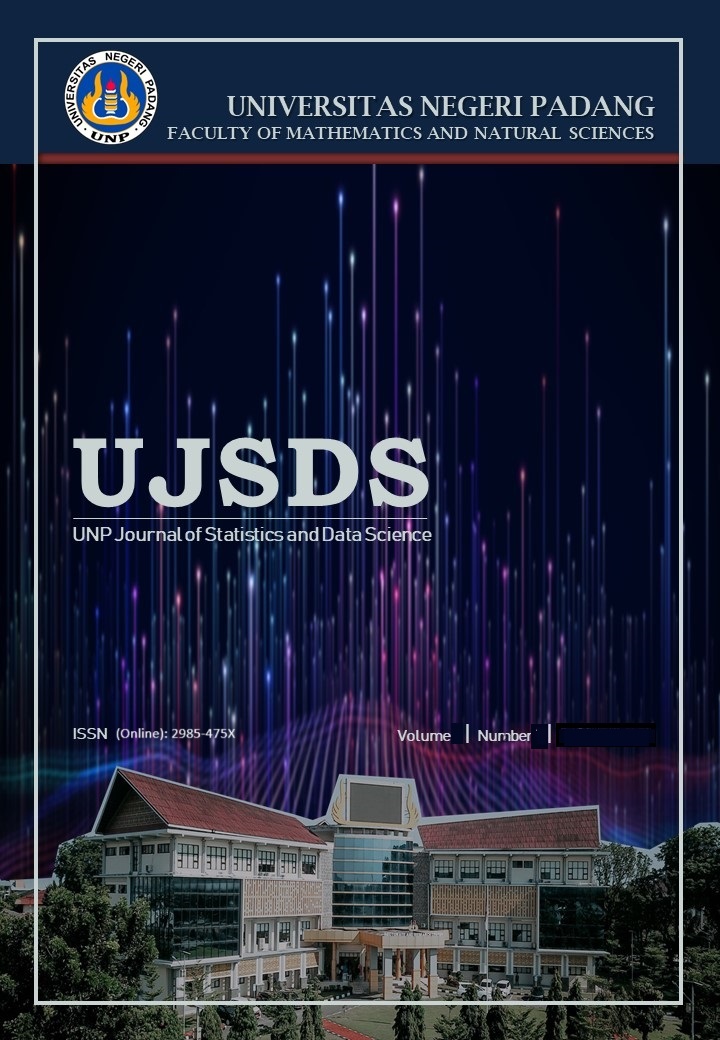Application of Extreme Gradient Boosting Algorithm with ADASYN for Classification of Households Receiving Program Keluarga Harapan in West Sumatra Province
DOI:
https://doi.org/10.24036/ujsds/vol3-iss2/369Keywords:
Adaptive Synthetic, Extreme Gradient Boosting, Program Keluarga Harapan, Adaptive Synthetic, Extreme Gradient Boosting, Program Keluarga HarapanAbstract
Program Keluarga Harapan (PKH) is a form of social protection provided by the government to overcome poverty in Indonesia. However, challenges remain in accurately predicting eligible households. Therefore, a data-based classification method is needed to identify PKH recipients based on their factors. This research was conducted in West Sumatra Province using variables from the Data Terpadu Kesejahteraan Sosial (DTKS) variable group contained in SUSENAS 2024. Based on data from Badan Pusat Statistik (BPS) of West Sumatera Province, there are 1.790 PKH recipient households and 9.810 non-recipient households, indicating a class imbalance. Considering the large amount of data and complex variables, PKH can be analyzed using the Extreme Gradient Boosting (XGBoost) algorithm because of its ability to handle large-scale data and produce high classification performance. To address data imbalance, Adaptive Synthetic (ADASYN) was applied before analysis. The application of XGBoost with the scale_pos_weight parameter shows low classification performance, with sensitivity value of 12.3% and balanced accuracy of 55.2%. To overcome this, unbalanced data was handled using the ADASYN method. The application of XGBoost after data balancing with ADASYN showed significant performance improvement, with sensitivity value 80.4% and balanced accuracy 88.1%. In classifying PKH recipient households, the variables that make an important contribution are the age of the head of household, floor area, diploma of the head of household, floor material and number of household Members. This research shows that the combination of XGBoost and ADASYN is effective in overcoming data imbalance and improving PKH recipient classification performance.
Downloads
Published
How to Cite
Issue
Section
License
Copyright (c) 2025 Amelia Susrifalah, Dodi Vionanda, Yenni Kurniawati, Dwi Sulistiowati

This work is licensed under a Creative Commons Attribution 4.0 International License.










